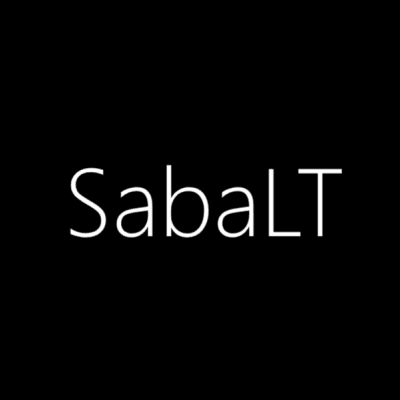
SabaLT - The Stealth Quant Startup Incubated within Boaz Weinstein's Hedge Fund
Published: 9/9/2025
The Quant Startup Incubating within Hedge Fund Saba Capital Management
When most people hear Saba Capital Management, they think of Boaz Weinstein and his well-known track record in credit: specifically, his winning bet against the JP Morgan Chase trader known as the London Whale. At that time, JP Morgan Chase had built up an enormous position in credit default swap (CDS) indices. Because the trades were so large, the firm distorted the market such that it began to move against JPMorgan. Weinstein, through Saba Capital, spotted the dislocation noting that the CDS indices were being mispriced because of JPMorgan’s footprint and took the other side of those trades. They bet that the spreads would normalize once JPMorgan’s position unwound and were successful.
Saba has been a big name in the credit markets for years, running some of the most well-known funds in that space.
But what’s really exciting right now, and what I’m super pumped to share, is something that you won’t find online (or at least has minimal presence): SabaLT. SabaLT is the quantitative trading arm that Saba has been incubating, founded only a year and a half ago. Where Saba has been fundamentally driven, SabaLT is all about building systematic, model-driven strategies from scratch. Excitingly, this “stealth” quantitative team that operates autonomously from Saba has recently made Yahoo Finance headlines. Saba LT aims to identify credit dislocations, taking advantage of the electronification of corporate bond trading.
Robert Rappleye and David Buckman, both previously quant traders from hedge fund Jane Street, are laying the groundwork for Saba LT’s expansion. Both are partners at Saba and The Niche is working directly with them to surface top talent on this platform! If there is mutual interest, your first meeting will be direct with them.
A Team of Just 10-15 Building their Own Strategies
The team at SabaLT is tiny - think 10 to 15 people - which is what makes the culture feel so entrepreneurial. The team is building their own tools, models, frameworks, and strategies from the ground up meaning that engineers and traders touch everything from idea generation and data pipelines to live trading systems.
As Robert and David emphasized, their biggest edge is everyone is technical, with the entire team made up of engineers and quants. The culture is collaborative, fast-moving, lean, and democratic, with an emphasis on the lean. In fact, being fast is their strength and as Robert and David emphasized, if expanding means losing out on the collaborative and lean nature of their team, then they would rather not expand. It’s a small, entrepreneurial crew inside the walls of a heavyweight hedge fund!
As a trading arm, Saba LT can’t share the specifics of their strategies as they are proprietary, but David and Robert discussed with me at a high level the space in which they operate as well as some core challenges. The core challenge in quant isn’t just about coming up with predictions but rather building the systems that can consistently make those predictions, manage risk, and scale across a portfolio. Engineers and traders work together to develop models that forecast market movements, build risk frameworks and portfolio optimizers that can forecast and place them on the pareto frontier, all the while learning how to scale these systems to work at incredible paces with high accuracy.
Operating as an Engineer and a Quant Researcher
Right now, the SabaLT team is small and tight-knit, and that’s intentional, so SabaLT’s partnership with The Niche is one of only a few opportunities to get involved with the company. In fact, the company is so low-key that when I was chatting with David and Robert about surfacing a logo for the company profile, they joked that there wasn’t one but that they’d choose and font and type the letter up to send to me.
The team is split into two roles, but because the team is so lean, people wear multiple hats so you’ll not only be building the systems and models that run the trades, but also ideating the strategies for the trades. If you’re mathematical by nature, have done research projects, and enjoy building predictive models, this may be a great opportunity for you. Many on the team think of trading almost like a game of strategy or game theory, where the entire market is a game of how players will react and you’re constantly testing hypotheses and iterating.
The team is also open to interns, with a flexible framework of when to start. The hope is to give interns real exposure to both the research side and the engineering challenges of building trading systems.
The interview process (for new grads and interns) is structured to be quick with a heavy emphasis on cultural fit as well as technical ability. You start with a phone screen with Robert and/or David, then a take-home project which you’ll do a deep-dive later on. The last round is in-person where there are technical as well as cultural-fit questions!